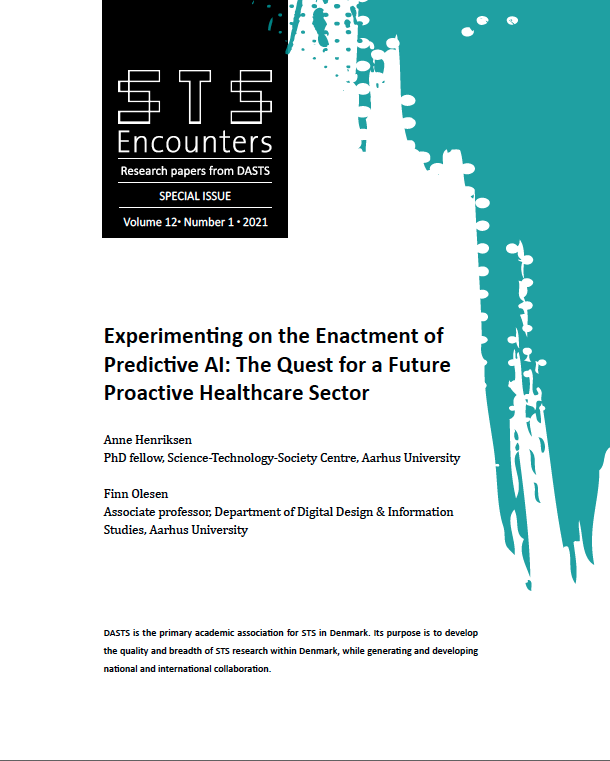Experimenting on the Enactment of Predictive AI: The Quest for a Future Proactive Healthcare Sector
DOI:
https://doi.org/10.7146/stse.v12i1.135404Abstract
Currently, a large number of AI projects are experimenting with the use of AI and big data for various purposes, especially in the public sector. In this article, we explore one such AI project. Specifically, we study a group of developers in Scandinavia and their efforts to enact predictive AI through the development of a clinical decision support system (CDSS) in pursuit of a future proactive healthcare sector. This yet-to-be system was envisioned to prevent unplanned hospitalizations by ‘turning’ what we term ‘potential patients’, i.e. the effective management of patient trajectories, in pursuit of a proactive healthcare sector. In the article, we investigate this particular project as an ‘experiment’ and conceptualize the developing CDSS as a ‘partially existing object’ with an uncertain ontological status. By studying the gradual enactment and emergence of the CDSS, we illuminate how this fuzzy data-driven object is performed and gradually attributed with solid reality: during its creation process, it advances from being a proactive device imagined to be used in primary healthcare to becoming a triage tool embedded in the prehospital emergency department. Along the way, the project developers are also transformed, learning what ‘moves’ and ‘actions’ to make, and, thereby, becoming skillful CDSS-operators. By using ‘experiment’ as our analytical lens, the article renders visible how persons, locations, and procedures have to be changed, revoked, and suspended in order for the AI project to succeed. Thus, the article contributes to showing how ‘social mangling’ is an essential precondition for predictive AI to succeed as a prolific solution to specific healthcare challenges, along with developers’ learning and transformation.

Downloads
Published
How to Cite
Issue
Section
License

This work is licensed under a Creative Commons Attribution-NonCommercial-ShareAlike 4.0 International License.
Starting with volume 15, articles published in STS Encounters are licensed under Attribution-NonCommercial-ShareAlike 4.0 International (CC BY-NC-SA 4.0). The editorial board may accept other Creative Commons licenses for individual articles, if required by funding bodies e.g. the European Research Council. Previous articles are not licensed under Creative Commons. In these volumes, all rights are reserved to the authors of the articles respectively.




